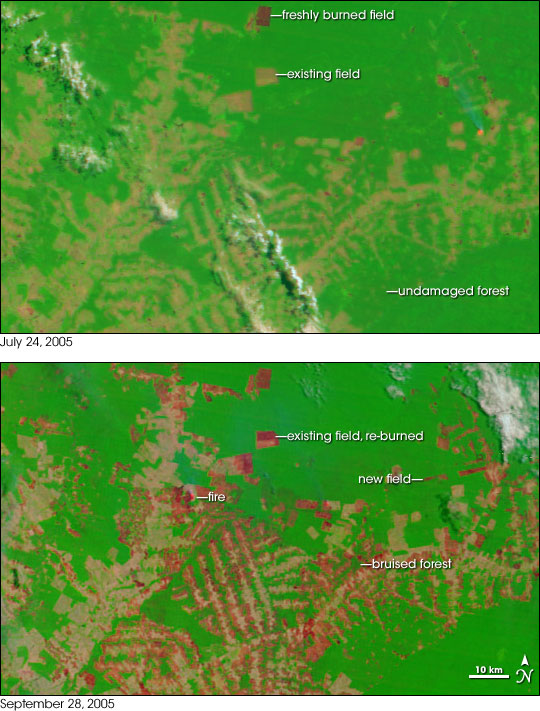


In the state of Acre in western Brazil, farms and pastures are surrounded by large, undisturbed areas of Amazon Rainforest. Since January 2005, many areas in the state have been experiencing severe drought, and the forests have become tinder dry. Since August, agricultural fires—many of them ignited in violation of a state-declared ban—have been escaping control, racing through adjacent fields and spreading into the forests. The situation deteriorated through September, and record amounts of previously undamaged rainforest may burn before the episode is over. Several NASA-funded scientists have helped the Brazilians respond to the disaster by providing daily summaries of fire detections made by satellite, aircraft, and ground observations.
These images from the Moderate Resolution Imaging Spectroradiometer (MODIS) on NASA’s Terra satellite shows a pattern of forest and farmland east of the city of Rio Branco before (top) and after (bottom) the peak of the 2005 agricultural burning season. The images are made from visible, shortwave, and near-infrared light detected by MODIS. Bright green is unburned forest, bright red is recently burned areas, and tan is cleared, but unburned land. Next to some burned fields, the forest appears dark green, or “bruised,” probably indicating places where fires escaped from fields and burned into the forest understory.
For more information, read Fire Emergency in Acre, Brazil.
[NASA images by Jesse Allen (NASA Earth Observatory)and Jeff Schmaltz (MODIS Rapid Response)]